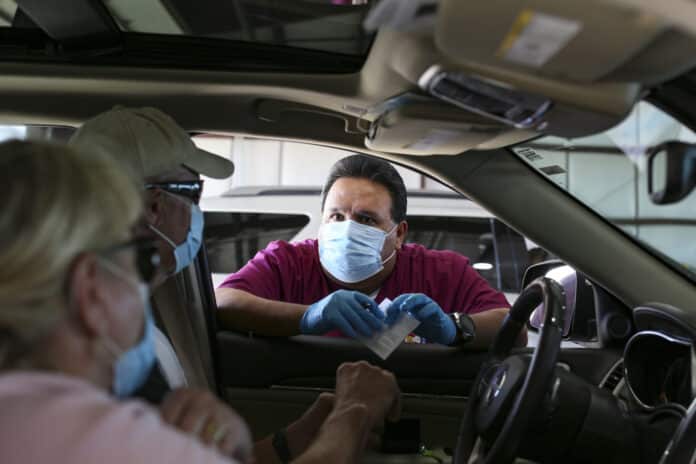The COVID-19 pandemic has led many people to spend more time at home, some out of concern for their safety and some because business closures have reduced the number of activities they can do outside the home. People who don’t leave home for medical reasons might slip from the thoughts of some people, but their needs during this pandemic still need to be considered — especially their need to be vaccinated against the virus.
Unfortunately, that inability to leave home leaves them unable to go to any of the public vaccination sites around the Rio Grande Valley — and they might not be in any physical condition to endure long waits in line such as those occurring at many of those locations.
It would be wrong to assume that people who are homebound are less likely to fall victim to COVID-19. And while they might be out of sight for other residents, their numbers are significant — some 17,000, according to reporting by staff writer Valerie Gonzalez.
Even though they might not leave home as often as other people do, they still come in contact with others. They receive visitors including family and friends. Others might come and tend to their personal needs, cook meals or perform chores around the house. Moreover, many of them receive visits from healthcare professionals such as doctors, nurses and therapists, as well as perhaps people who deliver meals to homebound residents. Because such people also visit other patients, they might be more at risk of coming in contact with people who have COVID-19, and thus can pass it on to other homebound residents. Worse, whatever infirmity a person has that precludes going outside might also could make the effects of viral infection more severe.
Identifying those who need the COVID-19 vaccine but can’t leave home is one of several challenges of helping such residents, and the Lower Rio Grande Valley Development Council’s Area Agency on Aging is working to compile those data. Homebound residents and family members or advocates can call 2-1-1 to place them in the database.
The next challenge is getting the vaccine to them. The sensitivity of the early vaccines makes this difficult, as one of them, from Pfizer, must be kept at a temperature of -70 degrees Celsius until it is used. That’s nearly 100 degrees below zero. A second, by Moderna, can be stored at -20 degrees Celsius, or -4 degrees Fahrenheit, which is within the capabilities of ordinary freezers. They must be kept at that temperature during transport to people’s homes, however.
Other drug companies continue to work on other coronavirus vaccines that don’t require such special treatment. Ziccum, a Swedish company, is trying to develop a vaccine that can be delivered in powdered form and mixed with water right before it’s used; some antibiotics and children’s medications are processed this way.
Such improvements, plus the additional supply of vaccines from more producers will help bring more doses to more people at a faster rate. Once they’re available, medical and community officials need to authorize and supply home health workers and others to distribute the vaccines to homebound residents.
The faster that happens, the better. For now, we take solace in knowing that work continues to improve the vaccine and its distribution.





